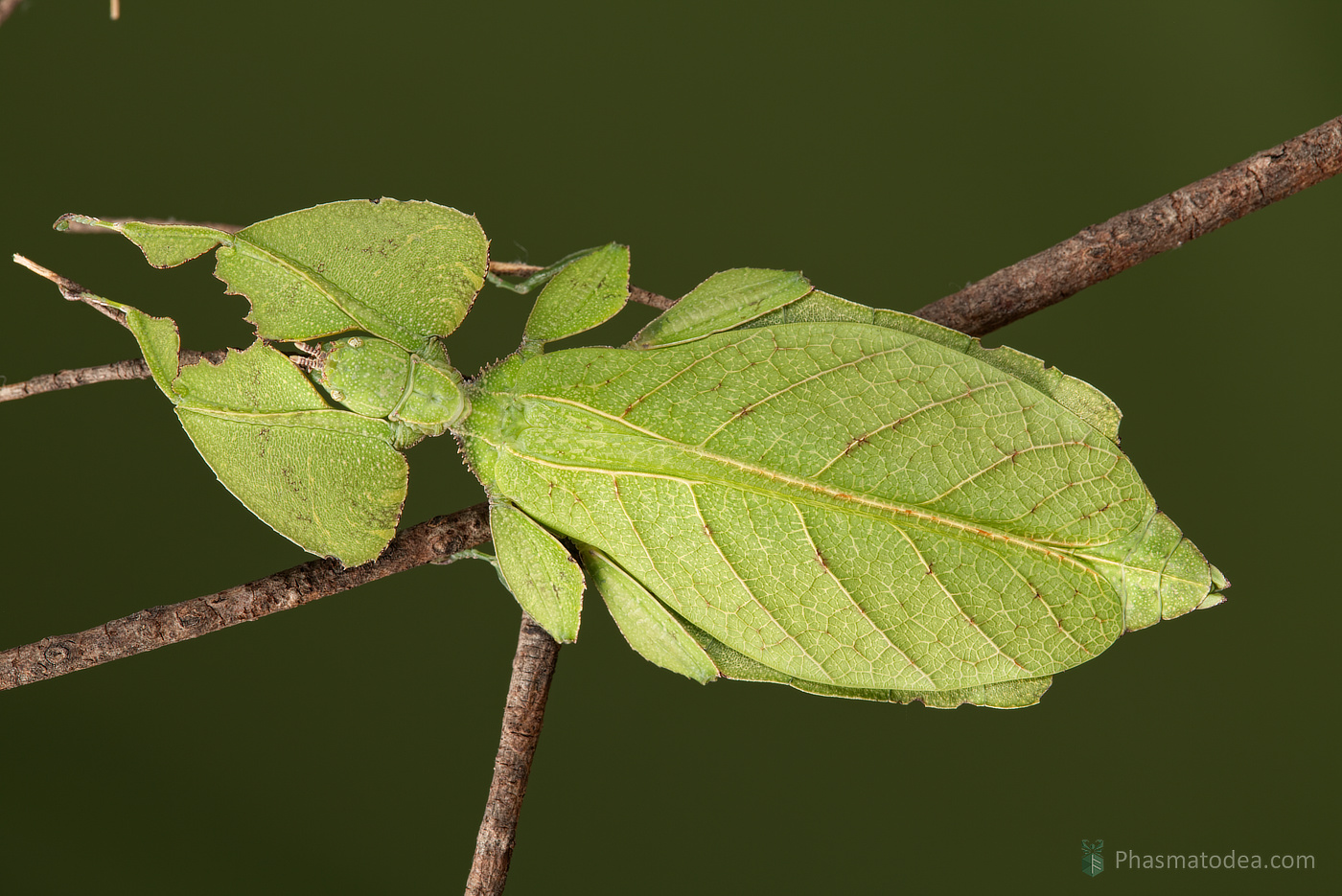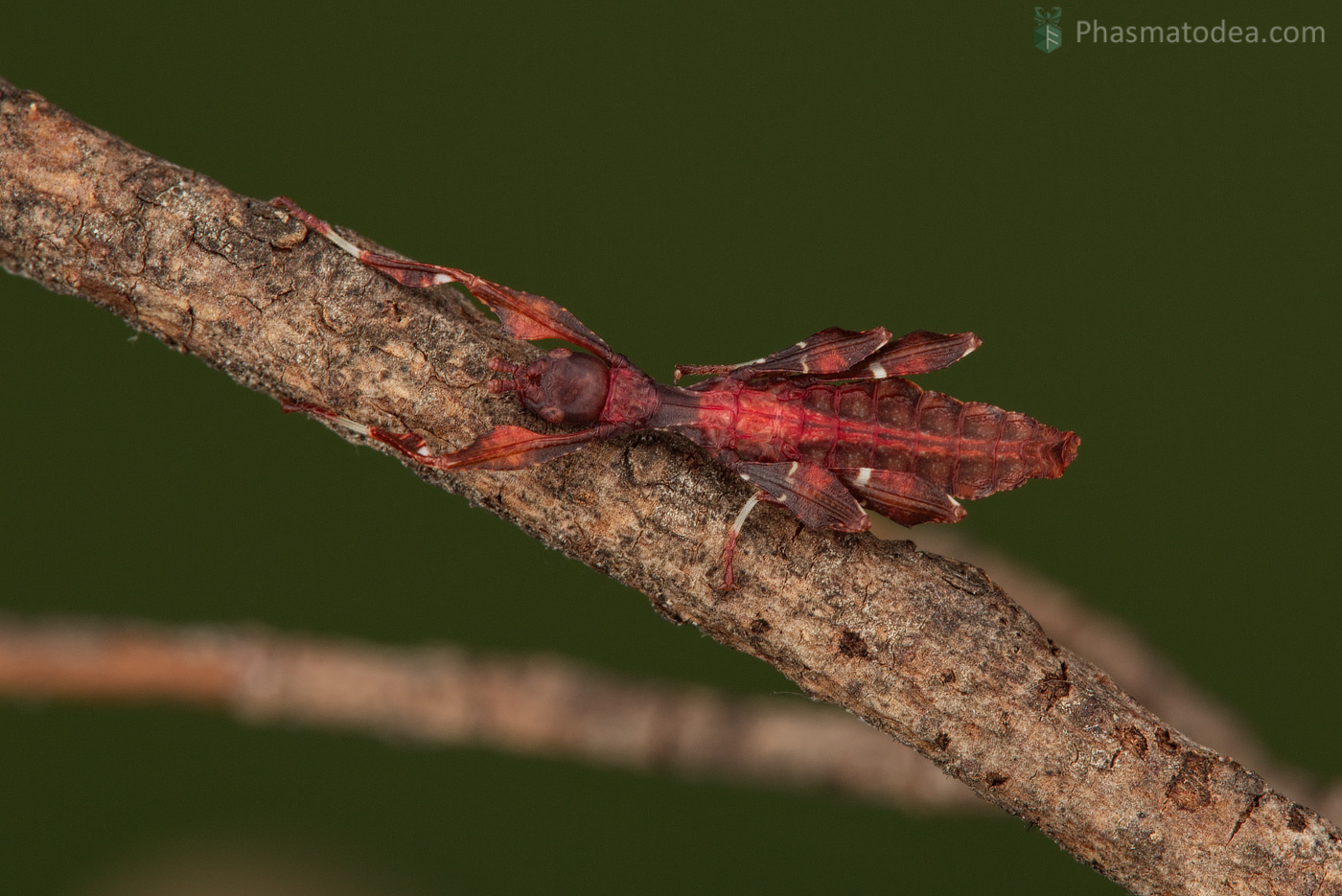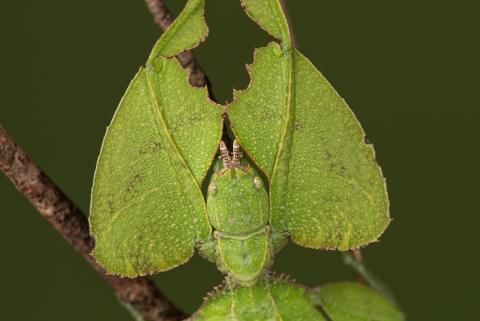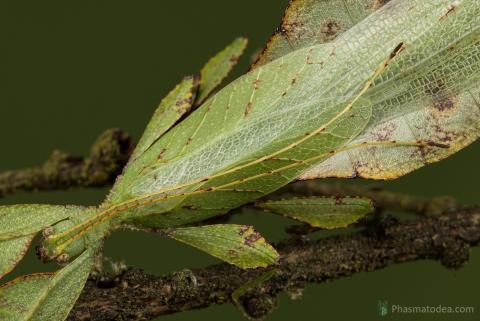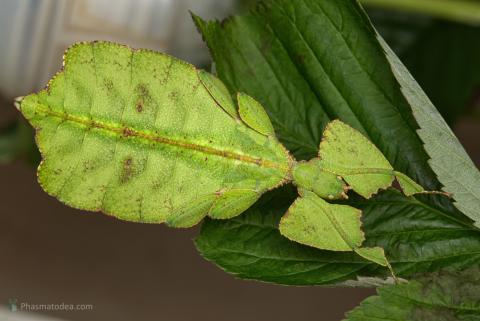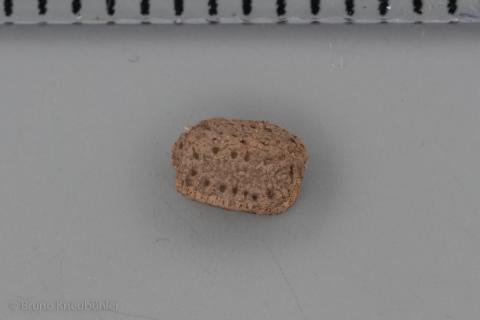
Genus
Species
Stock
Culture status
In culture
Breeding notes
(by Bruno Kneubühler)
General Informations
- provenience: area of Ban Saleuy, a village close to Xam Nuea. Xam Nuea is the capital of Houaphan Province (NE Laos), and is sometimes transcribed as Sam Neua or Samneua
- Ban Saleuy: 20° 16' 36.5" N, 104° 2' 12.8" E
- taxonomical evaluation by Royce Cumming (USA)
- further taxonomical informations ➤ Phasmida Species Files
Females
- very big Phyllium species
- body length ≈ 8.5 - 10 cm
- all F1 females were green
- mid and hind leg coxae are green
Nymphs
- newly hatched nymphs are reddish brown with few white patches and lines
- body length ≈ 14 mm, but not easy to be measured
- on how to distinguish between male and female nymphs
Eggs
- ≈ 4,5 x 2,5 mm - frehly laid / before having been in contact with a humid /wet environment
- brown
Food Plants
- bramble (Rubus spp.)
well accepted by nymphs and adults - Salal (Gaultheria shallon)
well accepted by nymphs and adults - Mango (Mangifera indica)
well accepted (info by Ernst Jansen) - Guava (Psidium guajava)
well accepted (info by Ernst Jansen)
Behaviour, Biology, Breeding
- an easy to breed Phyllium species
- both nymphs and adults are often seen feeding during the day
- Phyllium oyae is not too prone of the socalled "behavioural cannibalism". Nevertheless serious breeders are careful about not keeping too many specimens in the same cage. Please remember, the population density even in the biggest cage is much higher than it is out in nature
- females fling the eggs away with a swift swing of their abdomen
- eggs just drop to the ground
- about 10 - 15 eggs per female and week
- incubation (Cup-Incubation-Method, on medium damp vermiculite) about 4 - 6 months at 20 - 24 °C
- Please note that the incubation time is strongly influenced by the incubation temperatur. Also it is quite common that from the very same batch of eggs, some nymphs can hatch weeks or even many months after the first hatchlings
- eggs can be covered with vermiculite (about 5 mm high), which makes it even easier for the nymphs to hatch without getting stuck to the eggs shell
- eggs of this species are not particularely prone to get mouldy, still it is a good idea to use springtails to limit mould growth
- nymphs hatch after daybreak (around noon), not during the night. This is a typical behaviour for Phyllium
- the Free-Standing Setup (FSS) works very well to get Phyllium nymphs to start feeding and helps limiting the loss of small nymphs
- a humidity of about 65 - 70 % rH seems to be good enough for nymphs to grow up and moult successfully
- adults, especially males, are better kept at a humidity > 70%
- nymphs and adults can be sprayed 2 - 3 times a week with chlorine-free water, but make sure that the water dries up before spraying again
- we use a blackwater conditioner in the spraying water
- small nymphs can be kept in a Faunabox (or a similar cage), though make sure that the cage is not small
- move nymphs to a bigger cage as they grow bigger
- provide a cage of about 40 x 30 x 30 (cm, L x B x H) for 2 - 3 adult couples
- males will be adult after 4 - 5 months (at 20 - 24°C), females after 5 - 6 months. Please note that the development time is greatly influenced by temperature
Literature
- Cumming, Royce & Le Tirant, Stéphane. (2020). A new species of Phyllium Illiger, 1798, from the celebicum species group native to Laos (Phasmida: Phylliidae). 8. 1-9.
Some basics of phasmid breeding
- our detailed notes on how to successfully breed phasmids and the specific notes on successfully breeding Phyllium are an integral part of this care sheet
- in order to avoid overpopulation and maintain strong and healthy cultures, use 2 - 3 cages per species and keep just one species per cage
- keep just one species / population per cage to keep these populations "location-pure". Informations on why and how to keep cultures seperate and pure
- whenever you post informations or distribute a culture to fellow breeders, then use the full and correct scientific name with provenience affix:
- correct is for example Extatosoma tiaratum "Innisfail" - for the pure culture which originates from Innisfail
- incorrect and misleading is "prickly stick insect" for Extatosoma tiaratum, as there are many more "prickly" phasmids. Serious breeders do not use common names, as such designations only lead to confusion
- deceitful it is to use the label Extatosoma tiaratum "Innisfail" for an Extatosoma tiaratum culture which does not originate from Innisfail
- if possible keep day temperatures below 28°C, and a nocturnal temperature drop is natural and advisable
- do not spray too often nor too much, phasmids are no fish. In the confined space of a cage, with it's very limited potential for climatic balancing, humidity and moisture can quickly become too much and give raise to excessive mould and microbiologial growth

